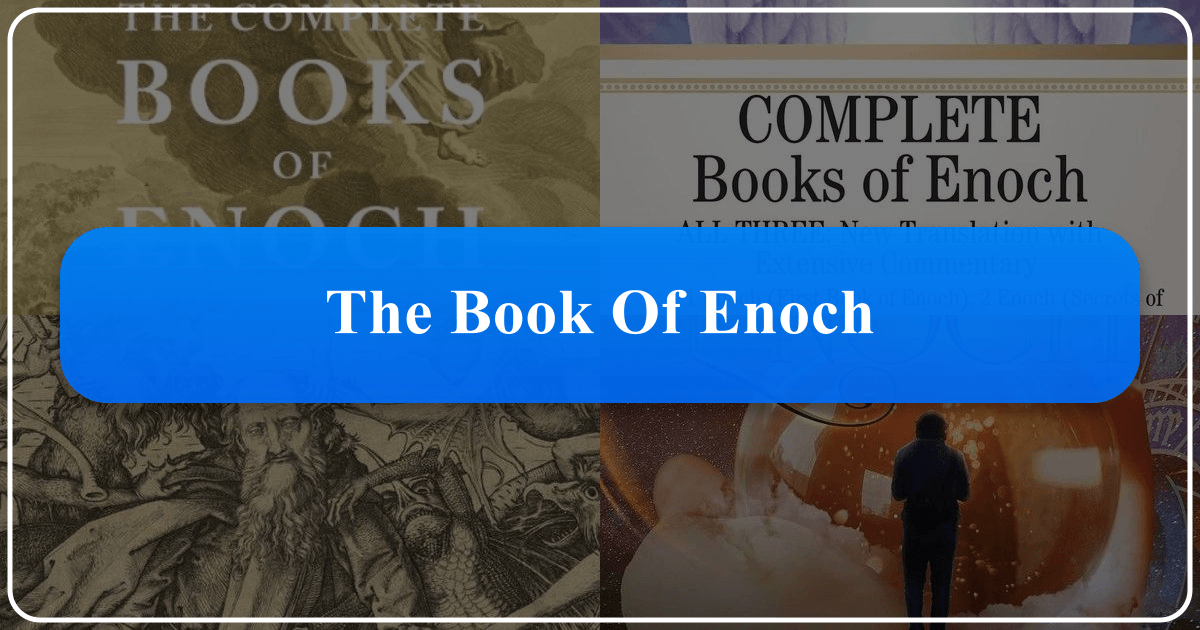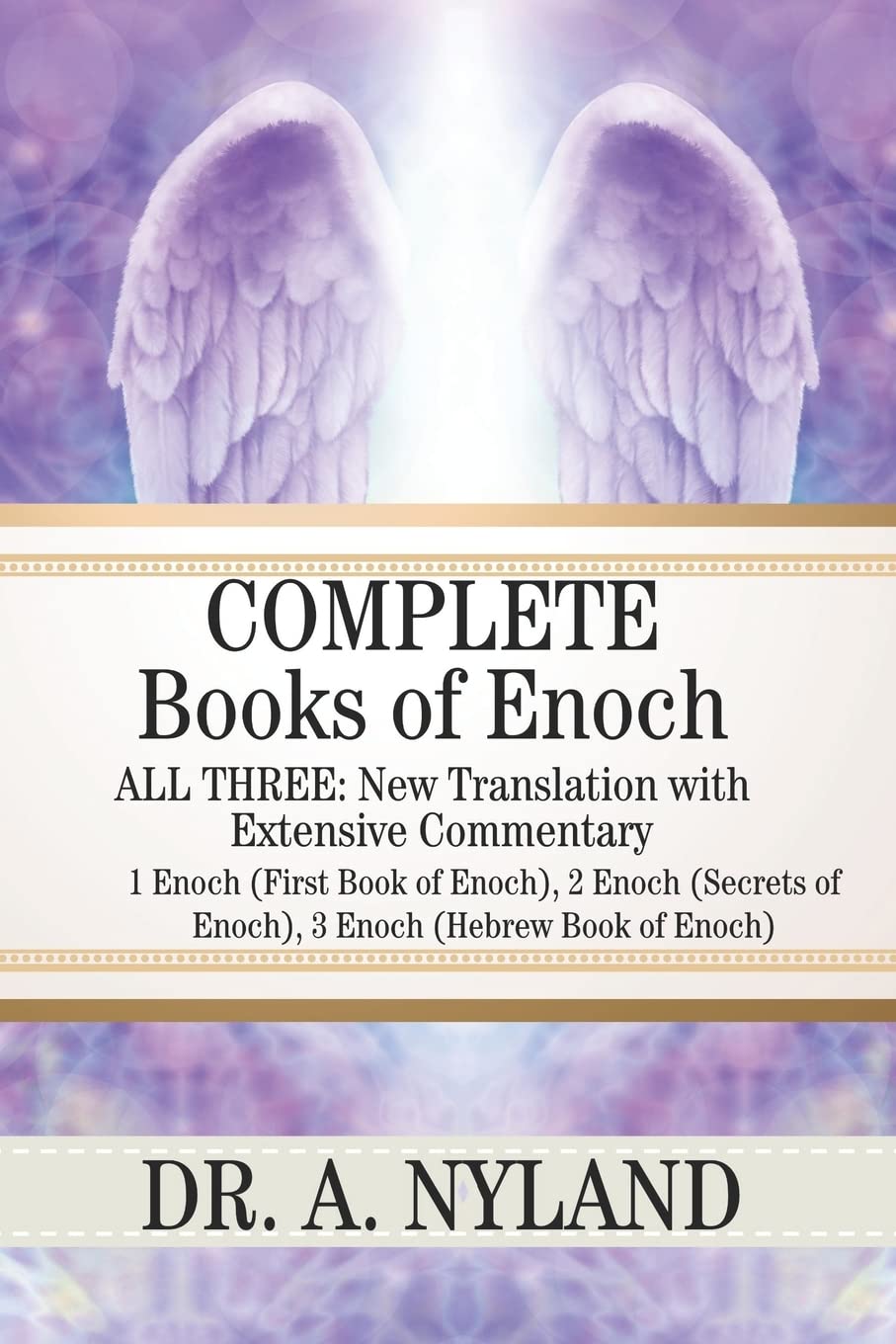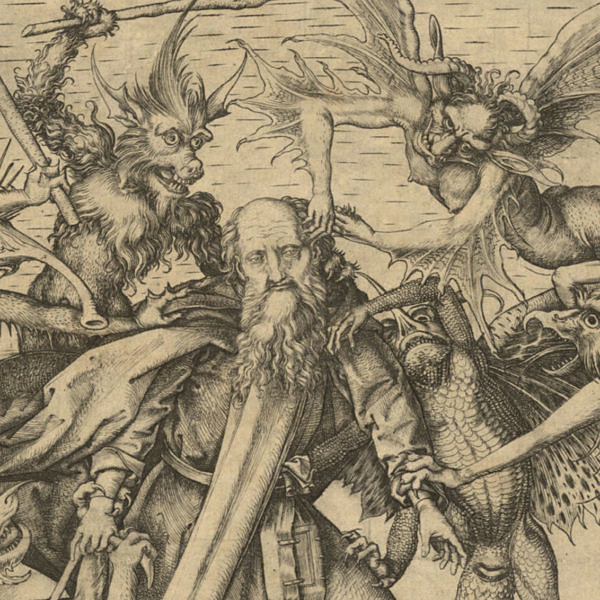The Book of Enoch: An Exploration of an Apocryphal Classic

The Book of Enoch, also known as 1 Enoch, is a fascinating and influential ancient Jewish text, traditionally attributed to Enoch, the great-grandfather of Noah. While not included in the canonical Bible of most Christian denominations, its historical and theological significance is undeniable. Its influence on early Christian thought and its unique perspective on angelology, demonology, and eschatology continue to make it a subject of intense scholarly and religious interest. This exploration of the Book of Enoch will examine its contents, authorship, historical context, and lasting cultural impact across various lenses, referencing the key topics of a hypothetical website dedicated to books and reading.

The Book of Enoch: Genre and Content
The Book of Enoch defies easy categorization within modern literary genres. It’s best described as an apocalyptic text, a genre common in Second Temple Judaism (roughly 500 BCE – 70 CE). Apocalyptic literature typically features visions, revelations, and prophecies concerning the end times, often involving celestial beings and cosmic events. The Book of Enoch fits this description perfectly, with its vivid descriptions of heavenly realms, fallen angels, and divine judgment.

However, the Book of Enoch is far from monolithic. It’s comprised of several distinct sections, each with its own style and thematic focus. These sections are often categorized as follows:
The Book of the Watchers (1 Enoch 1-36):
This is arguably the most famous section of the book. It recounts the story of the “Watchers,” a group of angels who descended to Earth, took human wives, and produced the Nephilim, a race of giants. This section vividly depicts the consequences of this transgression, including the corruption of the earth and the eventual divine judgment upon both the Watchers and the Nephilim. The narrative offers a detailed account of the rebellion in heaven, the resulting chaos on Earth, and the pleas for mercy made by the fallen angels. The story provides a rich tapestry of cosmological and moral implications. The Watcher narrative is particularly significant for its influence on later Jewish and Christian traditions regarding fallen angels, demonology, and the concept of divine judgment.

The Book of Parables (1 Enoch 37-71):
This section focuses on Enoch’s visionary experiences, during which he receives various revelations concerning the divine judgment, the fate of the righteous and the wicked, and the ultimate restoration of the world. The parables contain detailed descriptions of heavenly realms, emphasizing the glory of God and the stark contrast between the blessed and the damned. These visions explore themes of justice, divine retribution, and eschatological hope, offering a complex and nuanced portrayal of God’s relationship with humanity. Scholars often point to the sophisticated theological and literary artistry in this section.
The Astronomical Book (1 Enoch 72-82):
This section shifts focus to the celestial realm, providing a detailed description of the heavenly bodies and their movements. It’s considered a sophisticated piece of astronomical writing for its time, showcasing a deep understanding of the cosmos and its intricate workings. While this section might seem less directly connected to the apocalyptic themes of the other parts, it provides a backdrop for the cosmic dimensions of God’s power and plan. The intertwining of astronomical observation with religious insight is a remarkable feature of this section.
The Book of Dream Visions (1 Enoch 83-90):
This short section contains a series of visions presented as dreams. These visions offer further insight into the coming judgment, detailing the suffering of the wicked and the ultimate triumph of God’s justice. The vivid imagery and symbolic language contribute to the overall apocalyptic tone of the Book of Enoch. It provides another layer of prophetic insight into the end times.
The Epistle of Enoch (1 Enoch 91-108):
This final section presents itself as a letter or epistle, and it focuses on exhortations to righteousness and warnings against wickedness. It reinforces the ethical implications of the previous sections, emphasizing the importance of living a life pleasing to God. It serves as a fitting conclusion, driving home the importance of obedience and the consequences of defiance.
Authorship and Historical Context: Authors and Reading Habits
The authorship of the Book of Enoch is complex and debated. The text’s traditional attribution to Enoch is largely symbolic, a literary device used to lend authority and credibility to the work. Scholars generally agree that the book is a compilation of texts written over several centuries, not a single work from a single author. Linguistic analysis suggests the original texts were likely written in Hebrew or Aramaic, but the oldest surviving complete manuscripts are in Ge’ez (Ethiopic). The sections of the Book of Enoch may have been composed by different authors within diverse social and religious contexts.
The text’s creation spanned the Second Temple Period, a significant era in Jewish history. During this time, intense religious and political upheaval led to a flourishing of apocalyptic literature, reflecting anxieties about the future and hopes for divine intervention. The Book of Enoch emerged within this environment, providing a framework for understanding the world’s unfolding history and the ultimate triumph of God. Reading habits at the time would likely have involved oral traditions alongside the study of written texts, creating a vibrant exchange of ideas and beliefs. This cultural context profoundly shaped the development of the Book of Enoch.
Educational Value and Life Lessons: Summaries and Reading Habits
The Book of Enoch, despite its non-canonical status in most Western Christian traditions, offers significant educational value and presents numerous life lessons. Understanding its apocalyptic framework provides insights into the social, political, and religious anxieties of the Second Temple Period. Its sophisticated theological arguments and literary artistry can enhance our understanding of ancient Jewish thought and the development of early Christian theology.
Summaries and Interpretations:
Summaries of the Book of Enoch are readily available, offering accessible overviews of its complex narratives and theological themes. These summaries can aid readers in grasping the overall plot, characters, and messages of the text. Various interpretations exist, depending on the reader’s religious background and academic approach. Some emphasize its moralistic themes, focusing on the warnings against sin and the rewards of righteousness. Others highlight its cosmological aspects, examining its descriptions of heaven, hell, and the celestial realm. Still others explore its political and social dimensions, focusing on its reflection of the anxieties and hopes of the Second Temple era.
Life Lessons from Enoch:
Reading the Book of Enoch can offer valuable life lessons. The text’s emphasis on justice and divine retribution reminds us of the consequences of our actions, both in this life and the next. The story of the Watchers serves as a cautionary tale about the dangers of pride, disobedience, and the abuse of power. The parables offer powerful images of hope and redemption, emphasizing the importance of faith and perseverance. The astronomical section reminds us of the vastness and complexity of the universe, and its wonders can inspire contemplation of God’s power and creation. Finally, the epistle’s emphasis on righteousness calls us to live morally upright lives.
Cultural Impact and Reception: Literary Influence and Communities
The Book of Enoch has had a profound and lasting cultural impact, particularly in the realm of religious thought and literature. Its influence can be seen in various literary traditions, including the New Testament, which contains passages with thematic and stylistic similarities to Enoch. The Book of Enoch also played a role in shaping the worldview of many early Christians and provided a framework for their understanding of angelology, demonology, and eschatology.
Literary Influence:
The Book of Enoch’s literary influence is extensive. The text’s imagery and themes influenced later apocalyptic literature, with its impact observable in works like the Book of Revelation and other early Christian writings. Its use of vivid imagery, dream visions, and dramatic narratives has had a lasting impact on the style and content of religious texts. This influence stretches beyond Christianity, with echoes found in other religious and literary traditions.
Communities and Reception:
The reception of the Book of Enoch has been varied throughout history. While accepted as canonical scripture by the Ethiopian Orthodox Tewahedo Church, other Christian denominations and Jewish communities have largely considered it to be pseudepigraphical or non-canonical. However, its continued study and interpretation within academic and religious communities attest to its enduring relevance. Scholars across disciplines continue to investigate the book’s theological insights, its historical context, and its significance to understanding ancient Jewish and early Christian beliefs. Diverse communities of faith and scholars continue to engage with the text, ensuring its ongoing presence in discussions about religion, history, and literature.
Digital Libraries and Archives:
The Book of Enoch’s enduring legacy is also reflected in its accessibility through digital libraries and online archives. Numerous translations and scholarly commentaries are readily available online, making the text accessible to a broad audience. Digital libraries allow for easy access and cross-referencing with other ancient texts, enhancing scholarship and promoting wider engagement with the book’s contents. These digital resources also preserve the text for future generations, ensuring its continued relevance.
In conclusion, the Book of Enoch remains a captivating and influential text, despite its non-canonical status. Its unique genre, rich imagery, complex themes, and lasting impact on religious and literary traditions ensure its enduring study and relevance. By considering it through the lenses of genre, authorship, historical context, educational value, and cultural influence, we can gain a fuller understanding of this fascinating and multifaceted ancient text and its significance for the development of early Jewish and Christian traditions.